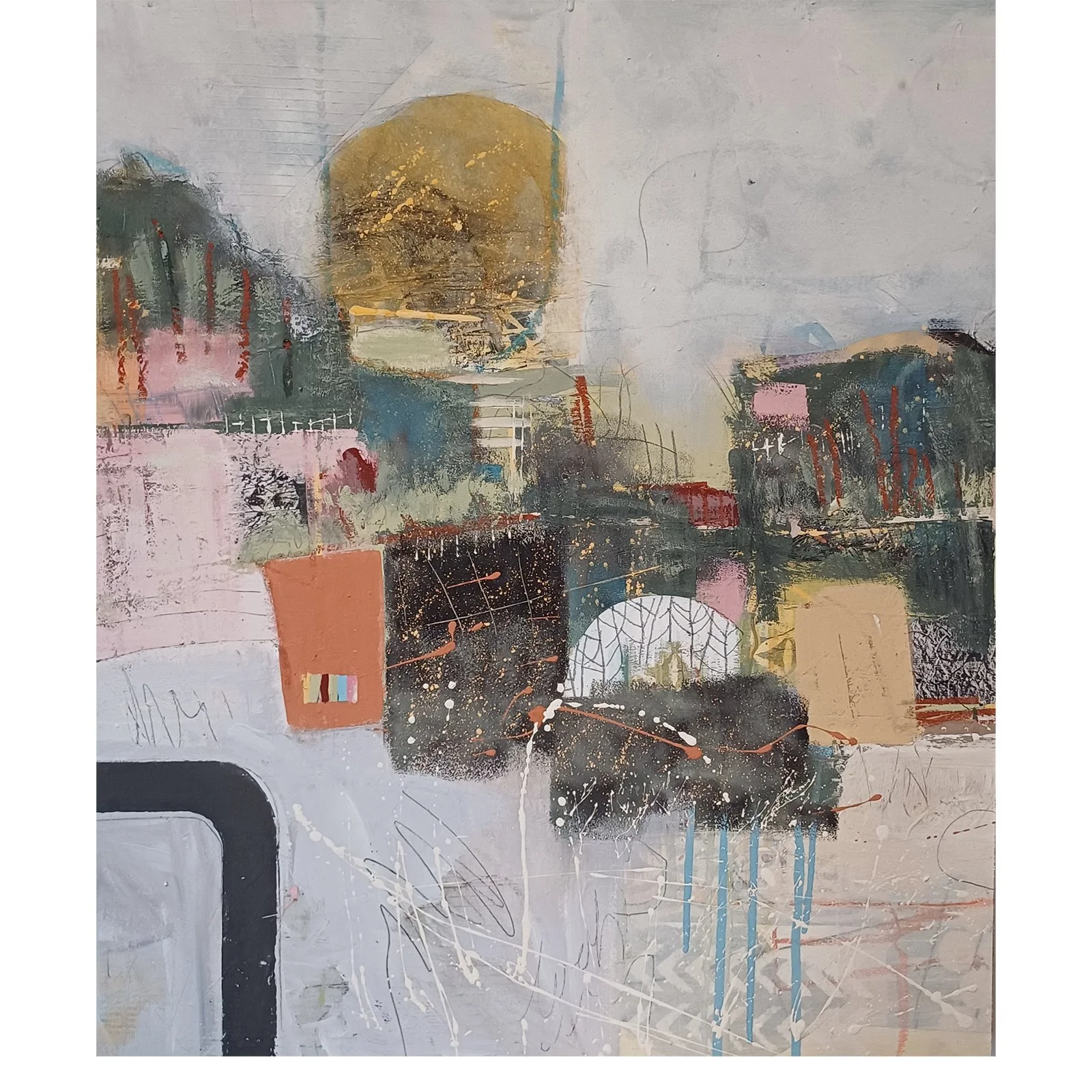layering
Layering and making collage material
The key to layering in my art practice is to make my own collage material-this not only provides me with interesting and unique stuff to play with but is a really great thing to do when I am feeling stuck, have no ideas, or I am bogged down in the middle of a painting-often inspiration happens in this process of having fun and not worrying about expectations. I get to truly play, and experiment with monoprint, stenciling, and various paint applications. One of my favourite things is printing on dressmakers pattern tissue Fashion design and patterncutting was a big part of my life for many years so I have an endless supply. I also keep all my old paintings and experiments-there are gems in there that can be torn up and used as interesting collage material-no painting is ever a waste of time!
I use certain motifs over and over in my paintings. These have become part of my visual language and they will disappear no doubt when I have exhausted that thing that is currently obsessing me-at the moment I make a lot of black circles (there are boulders and rocks all over the place). I am obsessed with gates and styles-these are barriers, but they are also ways through-which has become the horizontal lines that appear in a lot of my work and barbed wire, that upside down loopy thing-usually drawn in pencil if you look close enough-I suppose the right to roam springs to mind- I love the moors and see it as a right to be able to walk freely in nature- but more and more I come across obstructions where there used to be a path…
I use black collage tissue because I use coal, or ink for dark pigment and these can present problems when layering-coal will shift and bleed and ink will keep striking through to the surface-it seeps through the clay and leaves a stain. Hence I print all my darks and glue them down with wheat paste glue.
What I love about layering is its ability to build history on a surface, which makes for a richer surface to paint on. But there is also a practical reason-because of the nature of clay paint and its ability to absorb moisture, which is it tends to do unevenly, glazing can be difficult. I therefore put all my luminescence in the form of watercolour down over the layered substrate first, underneath the clay and leave gaps for it to shine through. The layered substrate forms a nice surface for accepting watercolour as it is slightly absorbent just like watercolour paper.
The process of applying the layers-which takes a lot of time as each layer has to dry completely- is quite meditative. Beautiful patterns appear, just hinted at below the surface as glazes of paint, a variety of marks and collage interweave with each other. I like the suggestion of something going on below the surface-just like any landscape has a geology, a history of human interventions and an abundance of life that goes on, sometimes apparent, sometimes hidden-I think it appeals to my curiosity.
Next month we will take a look at mud and its transformation into paint



